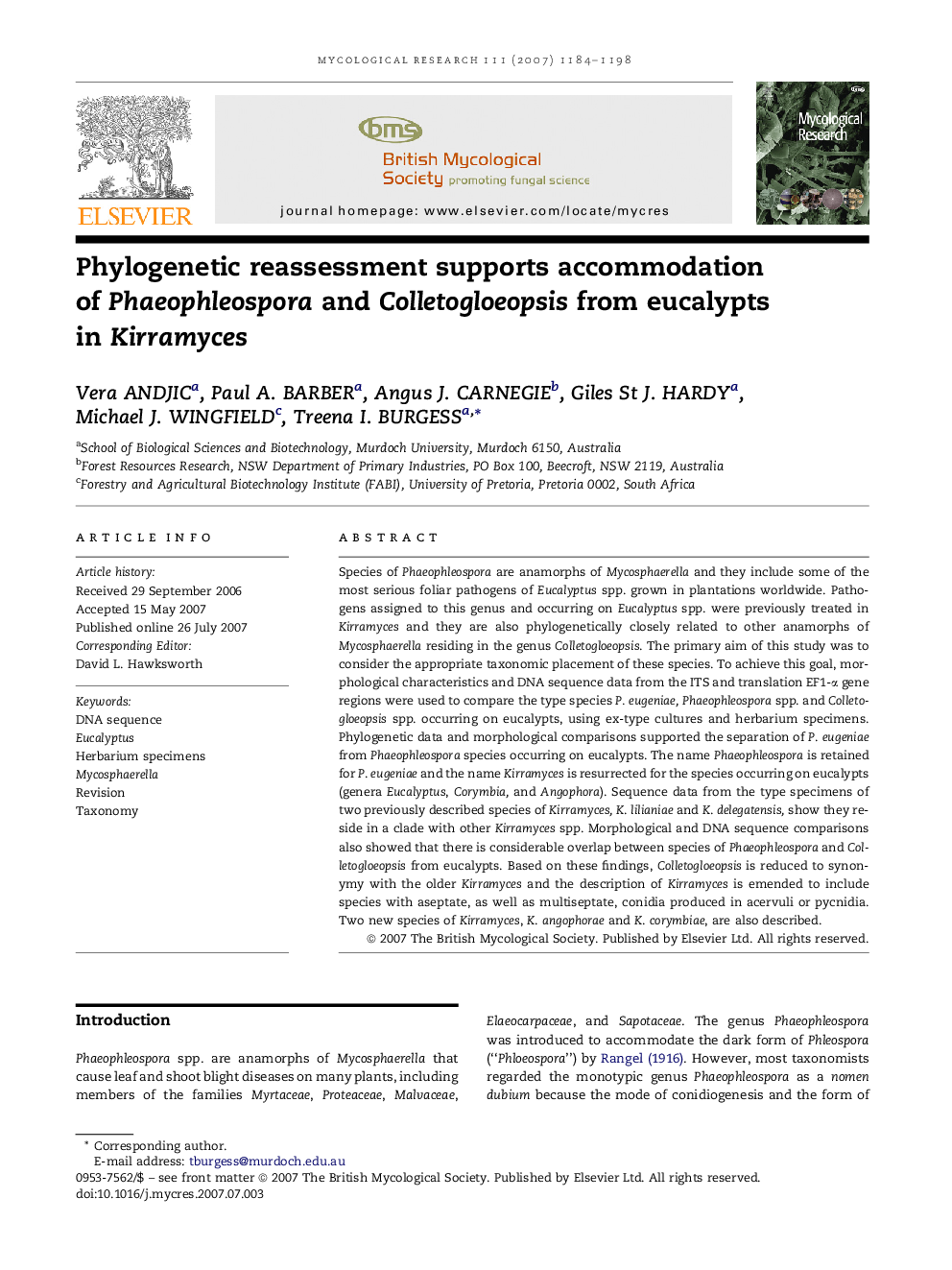| Article ID | Journal | Published Year | Pages | File Type |
|---|---|---|---|---|
| 4357913 | Mycological Research | 2007 | 15 Pages |
Species of Phaeophleospora are anamorphs of Mycosphaerella and they include some of the most serious foliar pathogens of Eucalyptus spp. grown in plantations worldwide. Pathogens assigned to this genus and occurring on Eucalyptus spp. were previously treated in Kirramyces and they are also phylogenetically closely related to other anamorphs of Mycosphaerella residing in the genus Colletogloeopsis. The primary aim of this study was to consider the appropriate taxonomic placement of these species. To achieve this goal, morphological characteristics and DNA sequence data from the ITS and translation EF1-α gene regions were used to compare the type species P. eugeniae, Phaeophleospora spp. and Colletogloeopsis spp. occurring on eucalypts, using ex-type cultures and herbarium specimens. Phylogenetic data and morphological comparisons supported the separation of P. eugeniae from Phaeophleospora species occurring on eucalypts. The name Phaeophleospora is retained for P. eugeniae and the name Kirramyces is resurrected for the species occurring on eucalypts (genera Eucalyptus, Corymbia, and Angophora). Sequence data from the type specimens of two previously described species of Kirramyces, K. lilianiae and K. delegatensis, show they reside in a clade with other Kirramyces spp. Morphological and DNA sequence comparisons also showed that there is considerable overlap between species of Phaeophleospora and Colletogloeopsis from eucalypts. Based on these findings, Colletogloeopsis is reduced to synonymy with the older Kirramyces and the description of Kirramyces is emended to include species with aseptate, as well as multiseptate, conidia produced in acervuli or pycnidia. Two new species of Kirramyces, K. angophorae and K. corymbiae, are also described.
